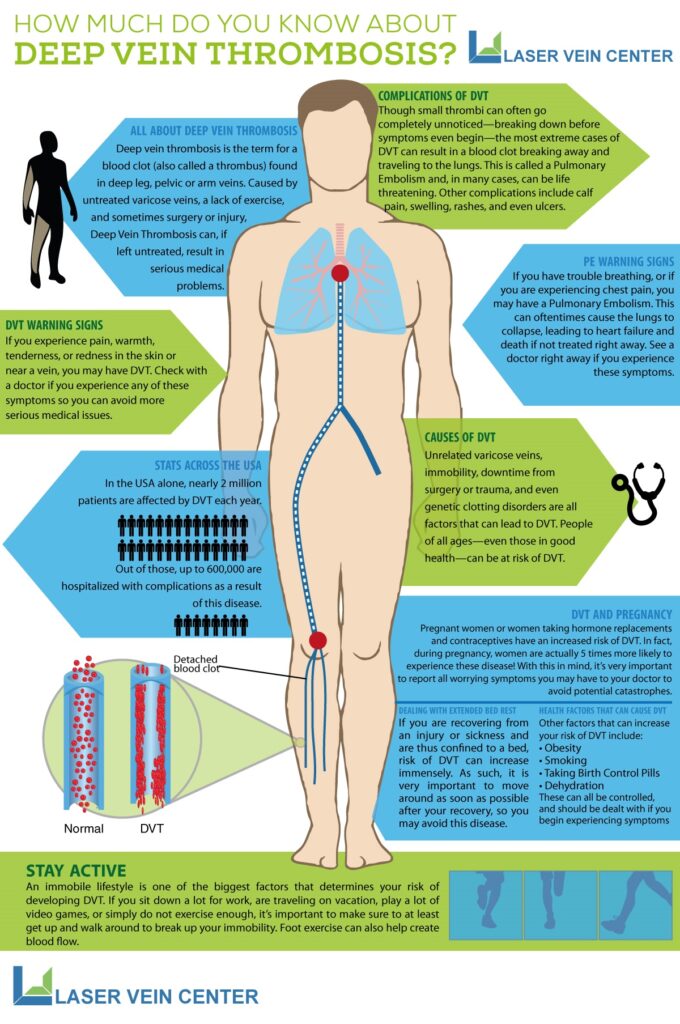
–TRANSCRIPT–
All About Deep Vein Thrombosis
Deep Vein Thrombosis is the term for a blood clot (also called a thrombus) found in deep leg, pelvic or arm veins. Caused by untreated varicose veins, a lack of exercise, and sometimes surgery or injury. Deep vein thrombosis can, if left untreated, result in serious medical problems.
DVT Warning Signs
If you experience pain, warmth, tenderness, or redness in the skin or near a vein, you may have DVT. Check with a doctor if you experience any of these symptoms so you can avoid more serious medical issues.
Complications of DVT
Though small thrombi can often go completely unnoticed—breaking down before symptoms even begin—the most extreme cases of DVT can result in a blood clot breaking away and traveling to the lungs. This is called a Pulmonary Embolism and, in many cases, can be life threatening. Other complications include calf pain, swelling, rashes, and even ulcers.
PE Warning Signs
If you have trouble breathing, or if you are experiencing chest pain, you may have a pulmonary embolism. This can oftentimes lead to heart failure and death if not treated right away. See a doctor right away if you experience these symptoms
Causes of DVT
Untreated varicose veins, immobility, downtime from surgery or trauma, and even genetic clotting disorders are all factors that can lead t DVT. People of all ages—even those in good health—can be at risk of DVT.
DVT and Pregnancy
Pregnant women or women taking hormone replacements and contraceptives have an increased risk of DVT. In fact, During pregnancy, women are actually 5 times more likely to experience these diseases. With this in mind, it’s very important to report all worrying symptoms you may have to your doctor to avoid potential catastrophes.
Dealing with Extended Bed Rest
If you are recovering from an injury or sickness and are thus confined to a bed, risk of DVT can increase immensely. As such, it is very important to move around as soon as possible after your recovery so you may avoid this disease.
Health Factors that Can Cause DVT
Other factors that can increase your risk of DVT include:
- Obesity
- Smoking
- Taking birth control pills
- Dehydration
These can all be controlled and should be dealt with if you begin experiencing symptoms
Stats Across the USA
In the USA alone, nearly 2 million patients are affected by DVT each year. Out of those, up to 600,000 are hospitalized with complications as a result of this disease.
Stay Active
An immobile lifestyle is one of the biggest factors that determines your risk of developing DVT. If you sit down a lot for work, are traveling on vacation, play a lot of video games, or simply do not exercise enough, it’s important to make sure to at least get up and walk around to break up your immobility. Foot exercise can also help create blood flow.
Choose the Laser Vein Center for your DVT treatment
If you have DVT and need treatment, the St Louis Laser Vein Center can help. Contact us today to learn more information!
